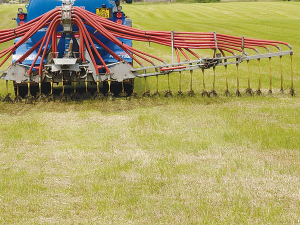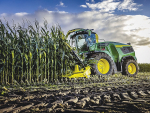With the Irish dairy industry often compared to that of New Zealand, it would appear that Paddy is a long way ahead of his Kiwi counterpart when it comes to using dairy effluent.
Those in the Emerald Isle recognised the value of nutrients many years ago, leading to a huge group of manufacturers who specialise in slurry and effluent spreading machinery.
Indeed, the industry has moved on from the more traditional slurry tanker that delivered via a splash plate, that is said to lose high levels of nutrient to the atmosphere, to now favour Low Emission Slurry Spreading (LESS) equipment in increasing numbers, with the dribble bar being one of the more common LESS methods.
Many farmers complain that when spreading slurry with a dribble bar set-up, the slurry can sometimes cake in lines where it landed in the paddock.
This is said to lead to increased stand-off times before cows can return to the paddock, contamination of the grass and some farmers reporting that slurry can still be seen in these lines at the base of the sward at silage mowing time.
This can mean contamination in the consoled crop or the need to set the mower higher and sacrifice volume to miss the lines of hardened slurry.
Stephen McKeown, a farmer from Newtownabbey, Co. Antrim in Northern Ireland, has developed a simple, patented device called Splash It, that is said to solve the issue of dribble- bar applied slurry being left in lines in the sward.
Stephen says, “We saw a number of problems being created by dribble bars, not least the caked lines of slurry being left in the paddock and too much slurry being deposited in the one area”.
He says that when slurry was being deposited in lines on his own farm, he noticed it was “killing the grass” in the immediate area, particularly so in dry periods. Additionally, some grass was growing, but tended to push the remaining dried slurry up into the sward, which come silage time, got raked up and ended up in the silage clamp or round bale.
“We designed and developed Splash It so it can be attached to any dribble bar, just needing two basic bolts to attach it to the dribble bar pipes.”
Noting that it typically took around and hour to fit the units to dribble bar systems with forty outlets, the key benefit is that slurry is applied in a wideangle format, with a much more even coat across the working width, while still meeting the government’s requirements for low emission spreading.
Stephen comments that the product is manufactured using polypropylene that is injection moulded, making it hard wearing and durable with a degree of flexibility to ensure it won’t break.


















